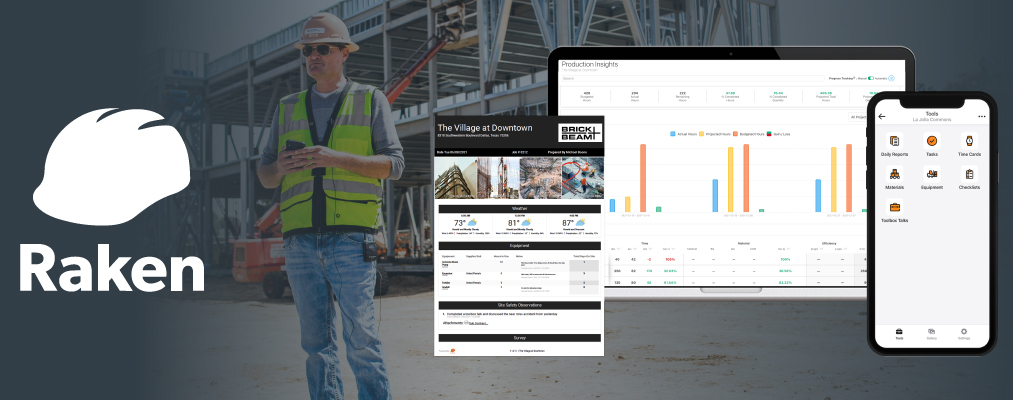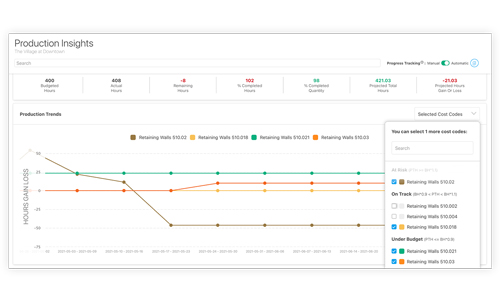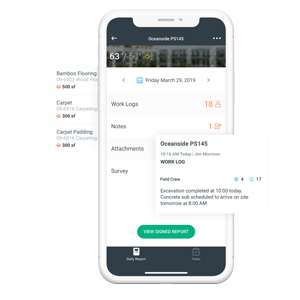Billions of dollars are spent each year on rework in the construction industry. Unexpectedly having to redo any part of a project interrupts carefully planned production schedules and may increase the overall project cost.
Raken’s construction management solutions protect against expensive mistakes by making detailed daily reporting—the best defense against rework—easy. Nick Pettengill, Construction Support Manager at Raken, recently spoke to SourceForge about his company’s innovative technology, which streamlines the documentation process for both the field and office.
What does rework mean in construction?
Rework is just what it sounds like: work that must be re-done, retouched, adjusted, or fixed. Ultimately, if the plans, specifications, or installation procedures for any part of a construction project aren’t perfectly coordinated or expertly performed, rework may be required.
What are common causes of rework?
While sometimes projects need rework because of accidental damage, often poor documentation or miscommunication are to blame. Design or engineering errors, lack of coordination between teams, missing or incorrect information, and overly tight deadlines can lead to installation errors that aren’t caught until it’s too late.
Construction is complex, and every project is made up of several moving parts. When quality assurance procedures fail, even a slight miscalculation or misinterpretation can cause major issues later on. That’s why project management is so important, and many contractors turn to Raken’s software to help minimize their risks.
With rework, are there legal or financial consequences?
Yes. Whenever a rework issue is identified in construction, the management team initiates a long process to understand the cause and identify the responsible party, who is then responsible for the legal or financial consequences. Each entity working on a construction project typically
has a reserve of money on the side to mitigate the costs associated with accidental issues or design errors.
However, the most challenging part of every rework issue is this identification process. Without cameras on every corner, how can you know who caused damage? Without a comprehensive daily log of activities, how would you know who was working in which area?
Maintaining a standardized, detailed documentation process helps resolve legal and financial issues related to rework fairly and efficiently.
How does rework affect the total project cost?
When you budget for a project, you don’t duplicate installation costs. Rework is always an added, unexpected addition, and sometimes the costs go beyond what has been reserved for covering potential issues.
In cases where rework is needed because of accidental damage caused by a subcontractor, that subcontractor is held financially responsible, and the rework doesn’t necessarily impact the total project cost. However, if rework is needed due to a design oversight, engineering oversight, or an inspection-related code issue, the total project cost will likely be affected.
How does rework impact productivity on a construction project?
If the rework falls under the category of a change order, which is work outside of the original project scope, the impact to general productivity is minimal. Still, teams must allocate resources to complete the change order, and in most cases contractors end up getting pulled off of their original scope of work to invest time and materials towards completing the rework.
The real impact of rework is to the overall schedule of the project, which is generally carefully planned in advance. When rework is required, the productivity markers based on the initial project schedule become harder to track, and it becomes more difficult to determine whether or not targets will be met on time. This can have a negative impact on deadlines, as they will either need to change or perform additional work beyond what was planned will need to be completed in the original time range.
How can construction companies avoid rework? Any best practices?
Companies can avoid rework by consistently documenting the activity on their job sites in the form of daily reports and quality control inspections. The more thorough the documentation process is, the better the chance that potential issues will be identified and avoided. Photographs and videos of the jobsite are an excellent way to catch any quality and safety concerns.
Some issues are impossible to anticipate and truly accidental, but effective construction management can significantly reduce the chance of rework. Additionally, if rework is needed, thorough documentation practices ease the struggle of identifying the root cause of a problem and redistributing resources to fix it.
Project management software designed specifically for the construction industry helps contractors collect the right information and keep reports organized.
How does Raken’s construction management software help reduce rework?
Raken’s easy-to-use app helps contractors collect crucial data on a jobsite without unnecessarily extending their workday. This includes work logs, inspections, observations, material and equipment tracking, safety documentation, and more. In addition to adding text descriptions or using customizable checklists, users can attach photos and videos that show a clear picture of progress and highlight potential issues.
Our documentation features help prevent rework and lessen its impact when problems do occur. If rework is needed, Raken’s app functions as a single resource where contractors can review all the necessary background information to identify responsible parties.
Why is Raken’s app easier to use than other construction management solutions?
Our engineers designed our user interface with field contractors in mind. We’ve stayed true to our roots, and our app makes it simple to record information. What was once the hardest part of a field contractor’s day becomes the easiest, thanks to Raken.
Raken’s app is also beneficial in the office setting, allowing project stakeholders to gain instant access to all the information being provided by the field. They can quickly and efficiently and find and manage any issues related to rework in real time.
About Raken
Raken was founded in 2014 under the idea that better projects start with the field. By creating the easiest-to-use field app, Raken helps crews provide real-time updates directly from the jobsite—giving the office better insights and visibility for every project. Headquartered in Carlsbad, California, Raken is used by more than 34,000 construction contractors worldwide for daily reports, production tracking, safety documentation, and more.
Related Categories


